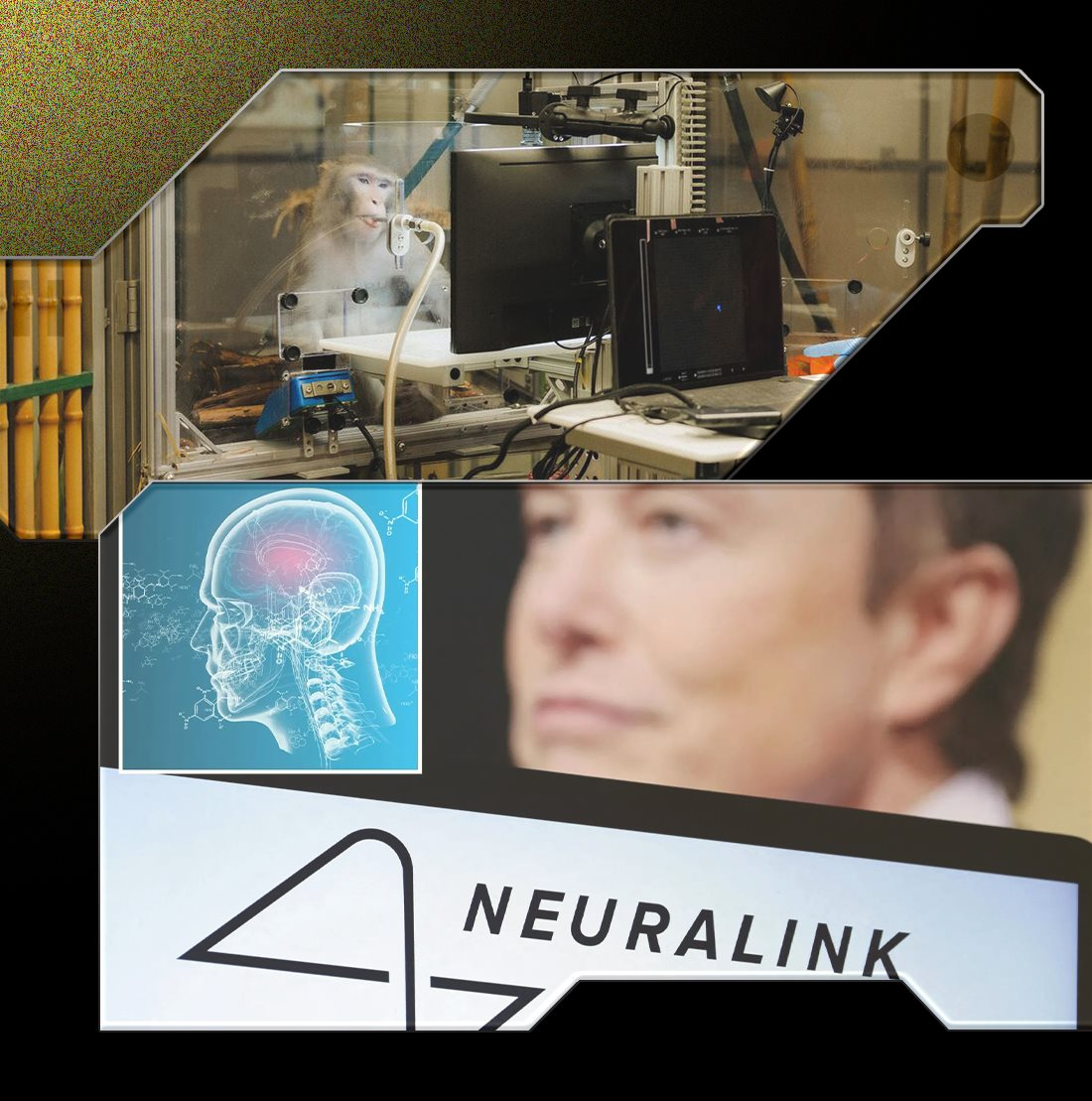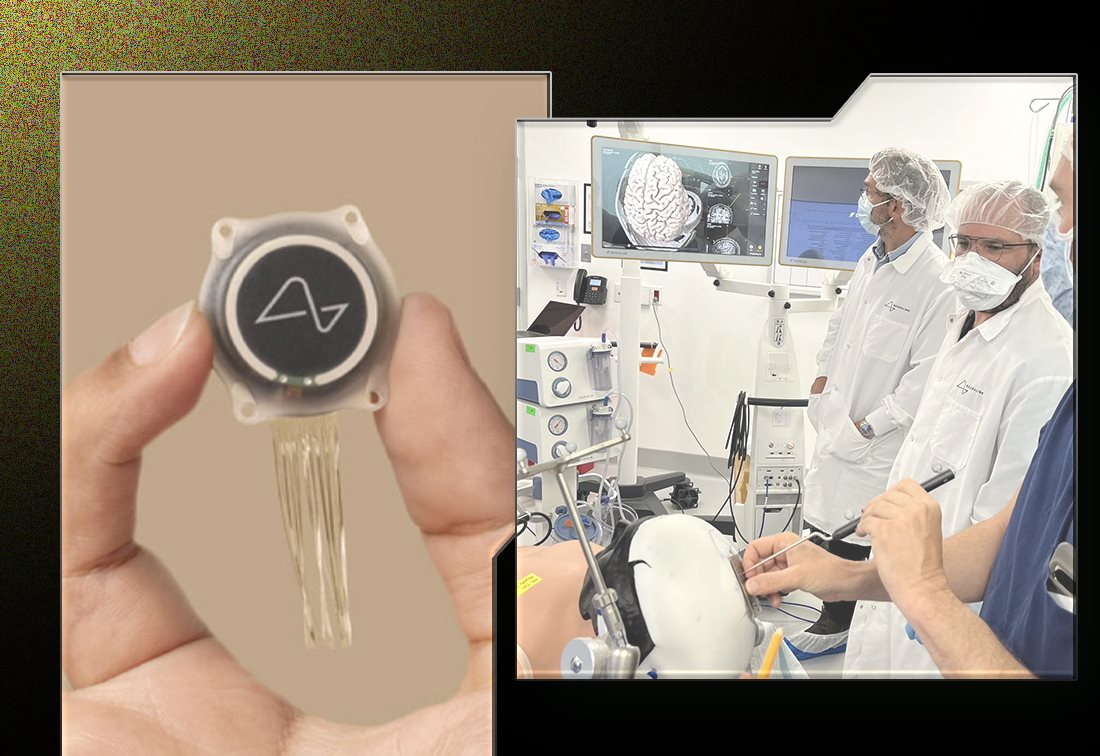Elon Musk has utopian ambitions with the human brain.
Elon Musk is preparing for the biggest milestone of his life: surgery to implant a chip in a human brain. His company Neuralink is looking for a volunteer willing to accept surgery to remove part of the skull so the robot can insert a series of ultra-thin electrodes and wires deep inside the brain. A chip the size of a quarter of a coin will be inserted here to perform reading, brain analysis, and then relay the information to a computer.
For the purposes of the trial, the ideal candidate would be an adult under the age of 40 with quadriplegia. The implant will be in a position that controls the hand, neck and forearm. The goal is to prove they can safely collect useful data from the brain — a key step in Neuralink’s effort to convert human thoughts into commands that computers can understand.
Neuralink, in Musk’s familiar style, makes many bold promises. People began to imagine modern clinics where anyone could come for a 15-minute robotic surgery. Human hybrid machines can upload information, put thoughts into storage, or even onto other brains.
“This may sound pretty weird, but we will eventually reach a symbiosis with artificial intelligence,” Musk said in a statement about human testing.
Unlike rockets and cars, implanting chips in the human brain requires extreme perfection. One is not in a hurry to bring this product to the market, then expects the best.
Synchron and Onward – two competitors of Neuralink have started testing brain implants for more than 1 year, but the impact is not as great as Elon Musk. Some neuroscientists say Neuralink is hyping the technology, further inhumane testing on monkeys, pigs and other mammals. However, the demo is very interesting. The company seems to have made rapid progress and is now building the most sophisticated brain implant on the planet.
If successful, the lives of millions of patients suffering from paralysis, stroke, or hearing loss will change miraculously. Soaring fame also made Neuralink sought after while Elon Musk once again reshaped the entire industry.
Over the past three years, Bloomberg reporter Ashlee Vance has toured Neuralink’s Silicon Valley facilities 10 times. In parallel with Musk’s strict requirements, this reporter has witnessed the profound development of technology as well as the great ambition of the company. The pressure to succeed is something even Musk has never seen before.

The history of brain implants dates back to technological advancement in the 1990s. The challenge requires researchers to collect and process tons of data related to the human brain. For the signal to be clearest, they need to place the sensors as close to the neurons as possible. Some try to avoid surgery by keeping the device outside the skull, but the distance is so long that the results are not very positive. The most accurate data usually comes from electrodes placed right next to brain cells.
Musk co-founded Neuralink in 2016 with 7 scientists from $100 million. The glamour of the investment and the great promise of the future make venture capitalists irresistible. Neuralink has since raised more than $500 million, of which $280 million comes from 2023.
The goal of Neuralink and many similar companies is to build a brain-scanning device that can step outside the lab. The ideal implant will possess unrivaled computing capabilities, enabling powerful recording, data entry, and information transmission. Of course, they must use as little energy as possible so that the patient’s body does not feel too hot.
Neuralink’s implant sits invisibly beneath the scalp, equipped with enough computational horsepower to handle jobs far beyond capability. Neuralink is also working on additional spinal implants aimed at restoring mobility and sensation in people with paralysis.
“The short-term goal is to build generalized brain interfaces and restore autonomy for people with debilitating neurological diseases. The long-term goal is to provide this service to billions of people, thereby unleashing our biological potential,” said DJ Seo, co-founder and vice president of engineering at Neuralink, adding that the implant has more than 1,000 electrodes to collect brain data. Most of the opponent’s equipment has only 16.
According to Bloomberg, Neuralink manufactures its own semiconductors — an extremely rare step in the medical device business that aims to regulate the chip’s power. A bar in Austin has been converted into a thousand-square-foot implant testing and manufacturing center.
It is important during surgery to avoid creating any bleeding or scar tissue in the patient’s brain. To achieve this goal, Neuralink built its own surgical robot. After a doctor cuts a small hole in the patient’s skull, the robot performs the extremely delicate task of placing electrode wires (also known as threads) into the brain.
About 10 Neuralink robots performed 155 such surgeries on sheep, pigs and monkeys in 2021. Last year, the number of surgeries reached nearly 300. For human subjects, the entire skull removal process is expected to last several hours, then take about 25 more minutes for the actual transplant.
Musk is constantly pushing his engineers to do more, faster. The robot must be able to perform surgeries in the shortest time, ideally without the help of a surgeon. He also wants semiconductor experts to invent simpler, more productive manufacturing techniques.
The tough culture at Tesla and SpaceX was injected into Neuralink to force people to work. Arbitrariness caused many experts to leave. Some staff also admitted to performing multiple surgeries on monkeys, pigs and sheep that resulted in more animal deaths than expected. The reason is that Musk has pressured them to urgently find a way to get FDA approval.

At one meeting, Musk set his sights on Onward, a company that makes implants close to his spine. Its device sends electrical impulses that help restore muscles and assist paralyzed patients in being able to walk. The gait was a bit forced, but for the patient’s family, it was a feat.
Musk likes that idea. He plans to start researching his own spinal implants, then combine them with brain implants. This time, Musk is extremely excited.
“In general, the company needs to progress faster. Progress is slow,” Musk said.
According to Zack Tedoff, head of the chip division, semiconductor engineers retooled the thread-bonding process on Musk’s advice. The true speed has increased to 50% while defects have decreased.
“Everyone in the company was quite stressed and scared, to the point where a lot of people quit their jobs because they couldn’t continue,” said a Neuralink employee, who spoke on condition of anonymity.
Neuralink immediately received interest from thousands of prospective patients. The FDA has also given the green light to allow the company to conduct additional implant trials in 2024 without the need for another 1-year evaluation period. According to a Neuralink representative, this approval is an important step forward to help its technology help more people.
It is estimated that each transplant surgery will cost about $10,500. Annual revenue is around $100 million.
Neuralink plans to perform 11 surgeries by 2024, 27 by 2025 and 79 by 2026. If favorable, 22,204 surgeries will be performed by 2030. The motivation comes from maintaining human competitiveness with super artificial intelligence.
“We need to get there before AI takes over the world,” Musk said, adding that he is so confident in the safety of brain implants that he is willing to implant them in his children.
Of course, the safety of the Neuralink project is still of particular concern to the FDA, such as the risk of threads migrating to other areas of the brain. According to Victor Krauthamer, a former FDA official, this can cause inflammation, impair function in key areas of the brain and cause ruptured blood vessels.
“The wires can completely cause damage because the brain is very soft and fragile,” he said.
In addition, the battery characteristics of the device also raise some concerns. As long as any component of the device connected to the battery current malfunctions, the current is capable of damaging brain tissue. The ability to safely remove the device from the brain is also a question that authorities ask.
A failed surgery could set Neuralink years back. However, if what Elon Musk expects can come true, the world will be able to explore the limitless potential of humans. The future of medicine was also enlightened from there.
News
Dave Crosby, the individual who captured the attention of all three Voice Judges in record time. Watch his incredible performance – it’s truly astonishing!
From the moment he graced the stage, it was evident that a remarkable performance was about to unfold. As Dave serenaded the room, a captivating melody filled…
Tom Brady Sparks New Dating Rumors After Being Spotted Out At Dinner With Popular Sideline Reporter
Tom Brady has set off another wave of dating speculation following his brief romance with Irina Shayk. According to TMZ, the former NFL star was spotted out in Beverly…
REPORT: Several Chiefs & Dolphins Players Suffered Frostbite During Saturday’s Grueling Playoff Showdown
Multiple players are said to have suffered frostbite during Saturday night’s playoff showdown between the Kansas City Chiefs and Miami Dolphins at Arrowhead Stadium. The game was the fourth-coldest in NFL…
Female Eagles Fan Unleashed All Sorts Of Cruel, NSFW Insults Towards Bucs Fans After Her Team’s Ugly Wild Card Loss In Tampa (VIDEO)
A female Eagles fan went off on Buccaneers supporters after having to sit through a frustrating Wild Card fixture in which her team put just nine points…
Female Eagles Fan Unleashed All Sorts Of Cruel, NSFW Insults Towards Bucs Fans After Her Team’s Ugly Wild Card Loss In Tampa (VIDEO)
A female Eagles fan went off on Buccaneers supporters after having to sit through a frustrating Wild Card fixture in which her team put just nine points…
Jalen Hurts Had An Interesting 7-Word Response After Being Asked If He Wants Nick Sirianni To Remain The Eagles’ Head Coach (VIDEO)
Jalen Hurts has taken an exit at the first opportunity as his Eagles are out of the playoffs following a season in which they raced to 10-1 before…
End of content
No more pages to load











